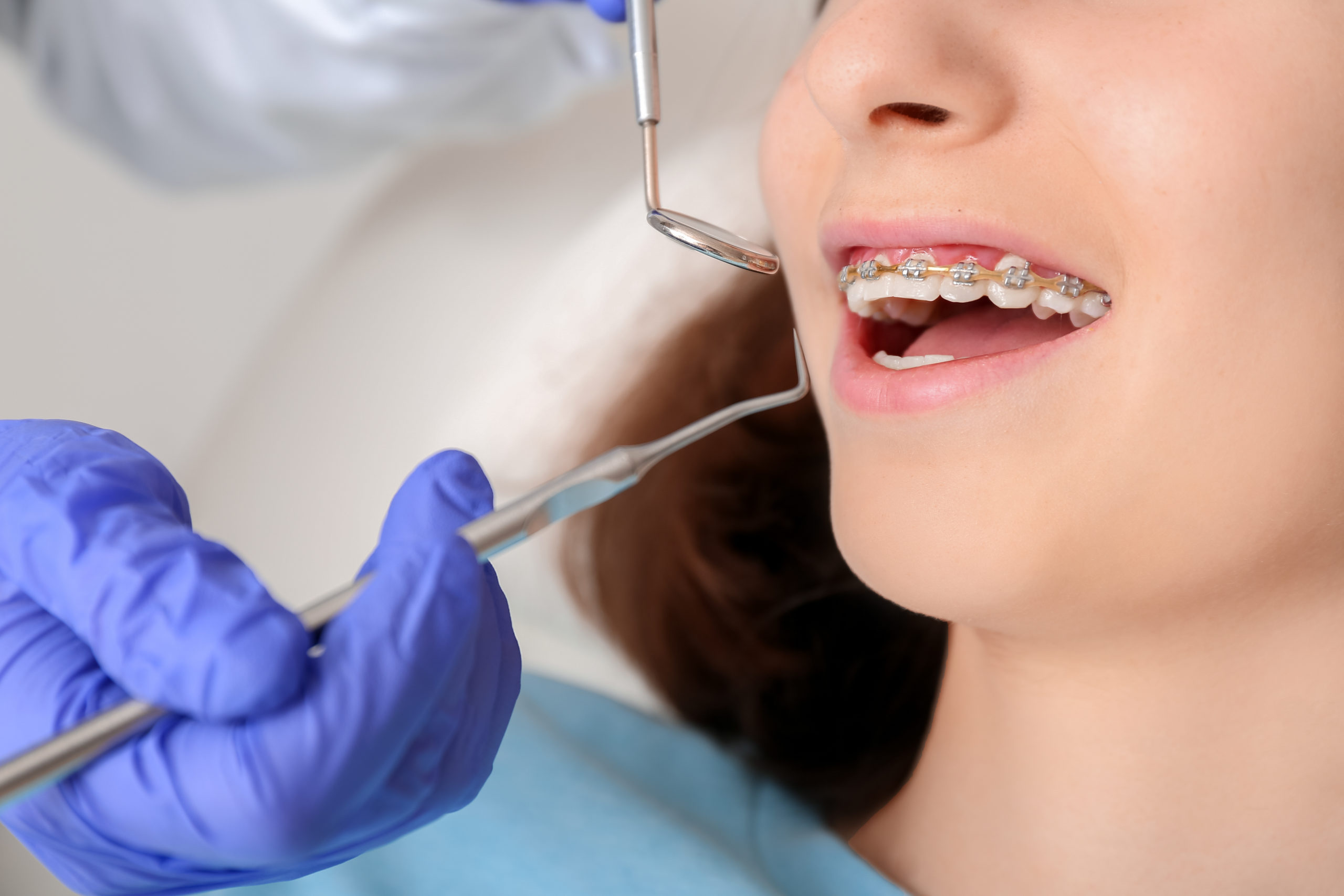How Cumming Orthodontics Addresses Common Braces and Invisalign Concerns
Wiki Article
Comprehensive Overview to Orthodontics Procedures for Correcting Oral Imbalances
In the world of orthodontics, the trip to attaining a completely aligned smile involves a myriad of treatments tailored to remedy dental imbalances. From typical dental braces to unnoticeable aligners and also medical choices, the area of orthodontics offers an array of solutions to deal with differing levels of oral irregularities. Understanding the details of each procedure, including their devices, benefits, and prospective downsides, is important in making educated choices regarding one's orthodontic therapy. As we navigate via the extensive guide to orthodontic treatments for fixing oral imbalances, the detailed information of each method will unravel, dropping light on the path towards a unified and functional dental placement.Orthodontic Procedures Review

Regular modifications and monitoring are important components of orthodontic therapy to make sure development is on track and to make any type of essential adjustments along the way. By going through orthodontic procedures, people can not only attain a straighter smile however likewise enhance their overall oral health and wellness and feature.
Conventional Braces: Just How They Work
When taking into consideration orthodontic therapies for dental misalignments, typical dental braces attract attention as a tried and true approach for fixing teeth placing. Conventional dental braces consist of brackets, cables, and bands that interact to use continuous stress on the teeth, gradually relocating them into the wanted alignment. The brackets are affixed to the teeth utilizing a special adhesive, and the wires are threaded through the braces. By changing the stress of the cords, orthodontists can regulate the direction and force put on each tooth, leading them into appropriate alignment over time.
One key element of exactly how standard braces work is the process of bone improvement. As stress is used to the teeth with the braces, the bone bordering the teeth is reshaped to support the new tooth placements. This improvement is essential for the lasting security of the remedied alignment. Patients will certainly require routine modifications at the orthodontist's workplace to guarantee the dental braces remain to apply the right stress for effective teeth motion.
Undetectable Aligners: Disadvantages and pros
Undetectable aligners offer a very discreet and practical alternative to standard braces for dealing with oral imbalances. These clear, personalized trays are basically undetectable when put on, making them an enticing choice for individuals looking for a much more cosmetically pleasing orthodontic treatment. Among the primary advantages of invisible aligners is their removability, enabling easier maintenance of dental hygiene contrasted to typical braces. Patients can eliminate the aligners before eating or cleaning their teeth, minimizing the danger of food getting stuck in the device and simplifying the cleaning procedure.
Surgical Orthodontic Options
Surgical interventions in orthodontics present sensible alternatives for resolving complex dental misalignments that may not be properly solved via conventional orthodontic treatments. While traditional braces and unseen aligners can remedy lots of orthodontic problems, particular instances need medical intervention to attain optimal outcomes. Surgical orthodontic alternatives are commonly recommended for severe malocclusions, significant jaw disparities, and cases where the underlying bone structure needs modification to achieve proper alignment.One usual surgical orthodontic treatment is orthognathic surgical procedure, which involves repositioning the jaws to deal with practical issues such as problem speaking or eating. This surgical procedure is typically done in partnership with an orthodontist that assists align the teeth prior to and after the treatment. Surgical orthodontics might additionally entail treatments to expose influenced teeth, remove excess periodontal cells, or reshape the jawbone to produce a much more unified facial profile.
Before thinking about medical orthodontic alternatives, people undertake a thorough assessment to identify the necessity and prospective benefits of such treatments. invisalign. While surgical treatment might seem complicated, it can significantly orthodontist improve both the function and aesthetics of the smile in cases where traditional orthodontic treatments fail
Retainers and Post-Treatment Care

Failing to abide with post-treatment treatment guidelines can result in relapse, where the teeth slowly move back towards their original positions. Constant retainer wear, excellent oral health, and normal dental exams are necessary for keeping the results achieved via orthodontic surgery and ensuring the long-lasting security of the fixed oral alignment.
Final Thought
Finally, orthodontic procedures supply numerous options for correcting oral misalignments. Traditional dental braces use metal brackets and wires to change teeth into appropriate alignment. Invisible aligners give an even more very discreet option yet might not be appropriate for all instances. Surgical orthodontic options are available for more serious imbalances. Retainers are commonly used post-treatment to preserve the brand-new placement. On the whole, orthodontic procedures can effectively improve oral health and visual look.As we browse through the extensive guide to orthodontic procedures for fixing dental misalignments, the intricate details of each technique will unravel, shedding light on the course towards a harmonious and practical dental alignment. - cumming braces
One of the most usual orthodontic treatments is the use of braces, which consist of steel braces and cords that apply mild stress to progressively move teeth into the preferred setting.When thinking about orthodontic treatments for dental imbalances, conventional dental braces stand out as a tried and true approach for correcting teeth placing. Additionally, unnoticeable aligners might not be suitable for complex orthodontic issues that need even more substantial teeth activity, as they are generally advised for light to moderate situations. Retainers are personalized orthodontic tools created to hold teeth in their remedied placements after the conclusion of orthodontic therapy.
Report this wiki page